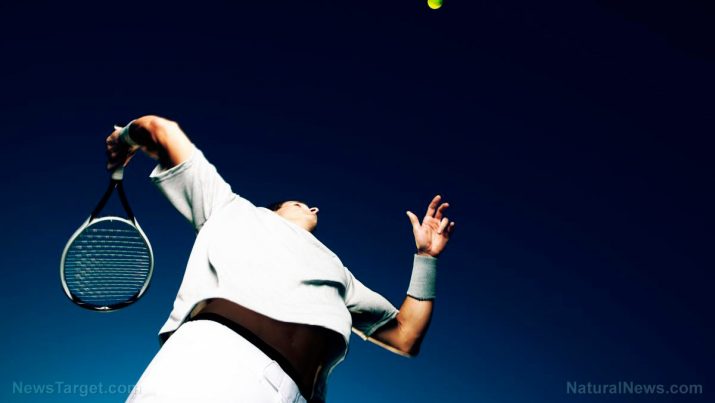
Lateral epicondylitis – causes, side effects and treatments at NaturalPedia.com
Thursday, May 03, 2018 by Ralph Flores
http://www.naturalpedia.com/lateral-epicondylitis-causes-side-effects-and-treatments-at-naturalpedia-com.html

Lateral epicondylitis, commonly referred to as a tennis elbow, is a condition wherein the tendons in the elbow are overworked, resulting in pain around the region. Despite the name, tennis elbow isn’t limited to athletes: The condition, which is caused by repetitive motions in the wrist and arm, can also affect plumbers, painters, carpenters, and butchers.
The pain that a person experiences in tennis elbow is primarily located to where the tendons of the forearm muscles are attached to a bony bump outside the elbow. This may then radiate down to the forearm and even the wrist.

Known risk factors and symptoms of lateral epicondylitis
The main cause of a tennis elbow is the repetitive motion of the wrist, which includes tennis, hedge clipping, excessive use of a hammer or screwdriver, and painting. In general, any activity that needs constant gripping or squeezing can cause the condition.
In tennis, certain moves can lead to the eponymous condition, such as a one-handed backhand, a forehand swing, and full-power services.
A person experiencing a tennis elbow may experience the following symptoms:
- A tenderness on the outside of the elbow
- A stiff elbow with persistent aching, especially in the morning
- Soreness in the forearm muscles
- Elbow pain, which becomes worse when grasping or holding an object
This may make it difficult to shake hands or grip an object, as well as turn and hold items.
Body systems affected by lateral epicondylitis
If tennis elbow is left untreated, it can result in chronic pain, and the damage on the arms and elbows become prolonged. This can significantly reduce the quality-of-life of a person. In severe cases, routine tasks will become unachievable, with some cases requiring surgery.
Food items or nutrients that may prevent or relieve lateral epicondylitis
Aside from ample rest, a diet that reduces inflammation is beneficial to treat tennis elbow. These include consuming:
- Colorful fruits and vegetables
- Proteins to support tissue repair
- Food items with vitamins A and C
- Omega-3 rich food such as fatty fish
- Ginger and turmeric
Avoiding processed foods and sugar will also reduce inflammation in the affected area.
Treatment and management options for lateral epicondylitis
In general, adequate rest and avoiding the activity which produced the symptoms will treat tennis elbow. Applying ice packs on the affected area is also beneficial to reduce inflammation, as well as training it through strengthening and stretching exercises.
Where to learn more
- Steroid injections do not provide long-term relief from tennis elbow (press release)
- Simple Oral Care for Patients Can Save Lives
- Turmeric vs Curcumin: What’s the Difference and Which is Better?
- ‘Active Release Technique’ provides safe, effective healing for common injuries
- Acupuncture Your Way to Health
Summary
Lateral epicondylitis or tennis elbow is a condition wherein the tendons in the elbow are overworked, resulting in pain around the region. The condition, which is caused by repetitive motions in the wrist and arm, isn’t limited to athletes: It can also affect plumbers, painters, carpenters, and butchers.
The pain that a person experiences in tennis elbow is primarily located to where the tendons of the forearm muscles are attached to a bony bump outside the elbow. This may then radiate down to the forearm and even the wrist. In general, any activity that needs constant gripping or squeezing can cause the condition.
In general, adequate rest and avoiding the activity which produced the symptoms will treat tennis elbow. Applying ice packs on the affected area is also beneficial to reduce inflammation, as well as training it through strengthening and stretching exercises.
Sources include:
Tagged Under: Tags: lateral epicondylitis





